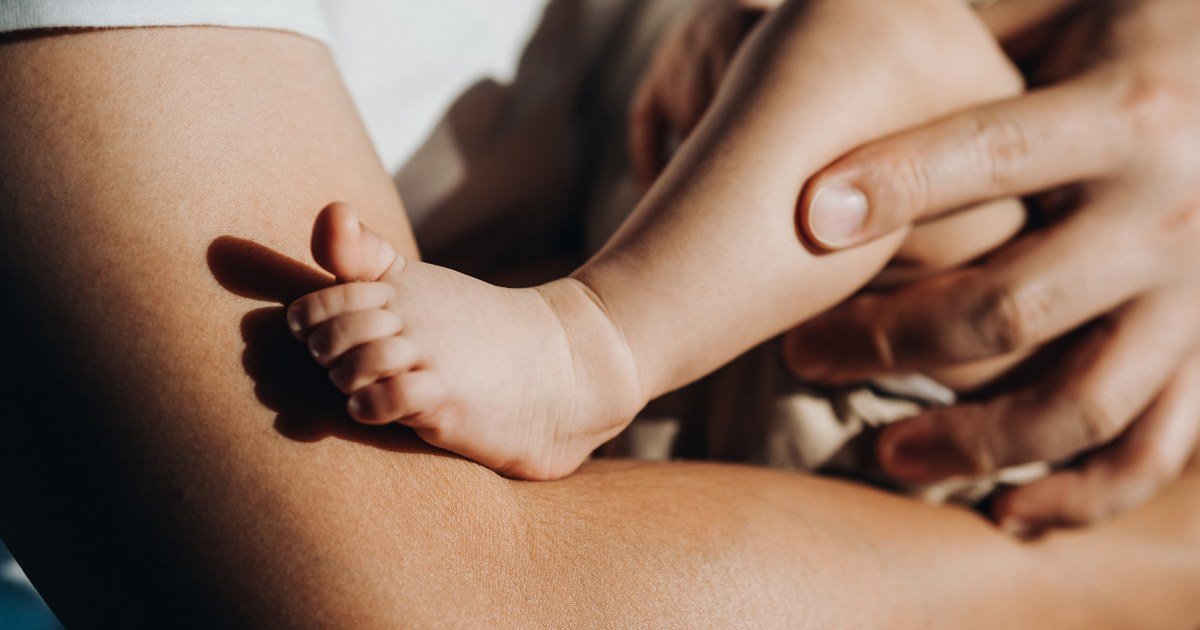London – eight healthy babies were born in Britain with the help of an experimental technique that uses three people’s DNA to help mothers avoid passing devastating rare diseases to their children, researchers reported Wednesday.
Most DNA is found in the nucleus of our cells, and it is that genetic material, some inherited from mom, some of dad, which makes us who we are. But there is also some DNA out of the core of the cell, in structures called mitochondria. Dangerous mutations can cause a variety of diseases in children that can lead to muscle weakness, seizures, delays in development, the main organic insufficiency and death.
Tests during the in vitro fertilization process can generally identify if these mutations are present. But in rare cases, it is not clear.
Researchers have been developing a technique that tries to avoid the problem through the use of healthy mitochondria of a donor egg. They reported in 2023 that the first babies were born using this method, where scientists take genetic material from the egg or the mother’s embryo, which then transferred to an egg or donor embryo that has healthy mitochondria, but the rest of their key DNA was eliminated.
The latest research “marks an important milestone,” said Dr. Zev Williams, who directs the fertility center of Columbia University and did not participate in the work. “Expand the range of reproductive options … will train more couples to pursue safe and healthy pregnancies.”
Using this method means that the embryo has three people’s DNA, the mother’s egg, the sperm of the father and the donor’s mitochondria, and required a change of law of 2016 in the United Kingdom to approve it. It is also allowed in Australia, but not in many other countries, including the US.
The experts of the University of Newcastle of Great Britain and the University of Monash in Australia reported at the New England Journal of Medicine on Wednesday that they performed the new technique in fertilized embryos of 22 patients, which resulted in eight babies that seem to be free of mitochondrial diseases. A woman is still pregnant.
One of the eight babies born had slightly higher levels of abnormal mitochondria, said Robin Lovell-Badge, a development genetics and stem cell scientist at the Francis Crick Institute that did not participate in the research. He said that it was not yet considered a level high enough to cause diseases, but that it should be monitored as the baby develops.
Andy Greenfield, a reproductive health expert at the University of Oxford who did not participate in the study, described it “very significant”, and added that the method of exchanging mitochondria would only be used for a small number of women for which other ways to avoid approving genetic diseases, such as trying embryos at an early stage, was not effective.
“The technique was done for the first time 10 years ago, so we have all been waiting for this report,” News told NBC by email. “Fortunately, children seem to be healthy.”
The monitoring of these children, potentially for many years, would be important to make sure they stay healthy, he said.
Lovell-Badge said the donor’s amount is insignificant, and points out that any resulting child would have no features of the woman who donated healthy mitochondria. The genetic material of the donated egg represents less than 1% of the baby born using this technique.
“If I had a bone marrow transplant from a donor … it will have much more DNA of another person,” he said.
In the United Kingdom, each couple looking for a baby born through donated mitochondria must be approved by the country’s fertility regulator.
Critics have previously raised concerns, warning that it is impossible to know the impact that this type of novel techniques could have on future generations.
“Currently, pronuclear transfer is not allowed for clinical use in the US, largely due to the regulatory restrictions of the techniques that result in hereditary changes in the embryo,” said Williams, of Columbia, in an email. “If that will change it is still uncertain and depend on the evolution of scientific, ethical and policy discussions.”
For approximately a decade, Congress has included provisions in annual financing bills that prohibit food and medicines administration from accepting clinical research requests that involve techniques, “in which a human embryo is created or intentionally modified to include an inherited genetic modification.”
But in countries where the technique is allowed, defenders say it could provide a promising alternative for some families.
Liz Curtis, whose daughter Lily died of a mitochondrial disease in 2006, now works with other families affected by them. She said she was devastating to be told that there was no treatment for her eight -month -old baby and that death was inevitable.
She said the diagnosis “our world returned upside down, and yet no one could tell us a lot about that, what it was or how it was going to affect Lily.” Curtis later founded the Lily Foundation on behalf of his daughter to raise awareness and support research on the disease, including the last work done at the University of Newcastle.
“It is very exciting for families who do not have much hope in their lives,” Curtis said.
The Human Fertilization and Embryology Authority, the United Kingdom fertility regulator, welcomed the findings, adding that the technique would only be legally available for those with a very high risk of passing the disease to their children.
As of this month, 35 patients have been authorized to undergo the procedure.








